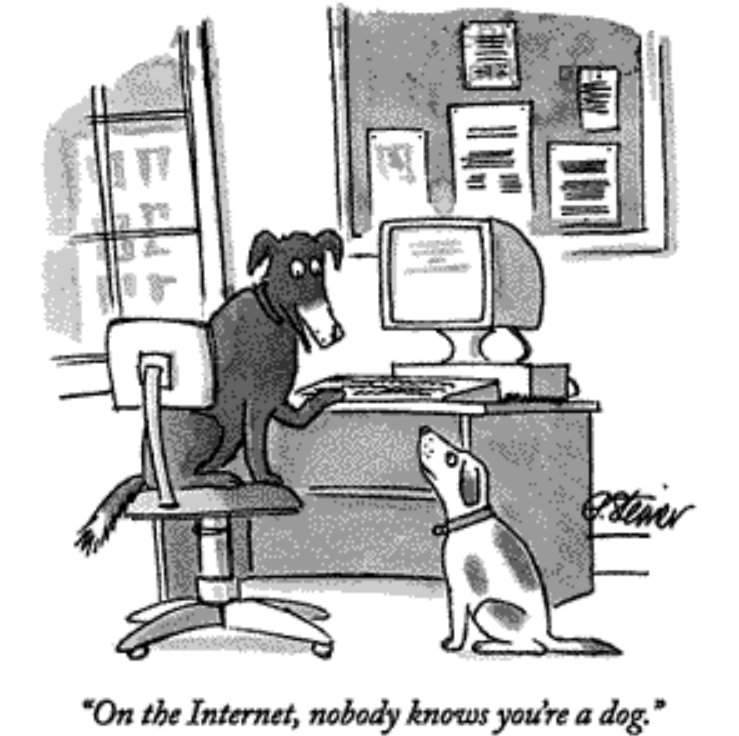Here comes a 💥 thread 💥 (+ a surprise at the end)
Good creative briefing starts with building a relationship with your creative team before you brief them. And after the briefing, continue to help them focus their thinking. They’ll thank you later.
Templates are fine. Asking your creatives “how do you prefer to be briefed?” or “what do you expect from strategy?” is much better. Your brief should adapt to your creative team, so take time to know your team.
Reading from your brief is ok. Doing a presentation or having killer gifs and references is more likely to get people pumped up about the task. Smiling and having fun is a winner strategy.
The briefing should be a conversation, but remember: never leave the room without reminding everyone, in clear and simple terms, what the task at hand is.
(You’d be surprised how easy this is to overlook.)
On top of a clear task, make sure you define how you’ll be judging the ideas. What is it meant to do? How do you intend to evaluate that? Contrary to popular belief, “I’ll know when I see it” is not good enough.
This depends on the team, but try and avoid being the “brief and leave” type of strategist. Keep reading about it. Keep sharing it with creatives. You never know when the right reference will spark the right thought.
Talk to real people. Talk to real people. Talk to real people. Google is amazing but it cannot be the sole source of your research. Getting out of the office is not a bonus. It’s the job.
Everyone works differently, but it helps as soon as you get a brief to share first thoughts of what you want to do – early. This is not to deliver a half-baked strategy, but rather to get a sense if you’re on the right track.
“Creative” and “strategist” are helpful but sometimes get in the way. A good creative is strategic. A good planner is creative. Shun the ivory tower of having all the intellectual knowledge. Your creatives will thank you for facing the trenches with them.
Even the most senior strategists can get the wrong strategic direction. Sometimes it’s more important to get the business problem framed right. The rest comes from a little bit of chaos. Creativity has fewer rules than people think (if any at all).
The new specialisations make this a pretty interesting job. But don’t let that get in the way of a big idea. Specialisation matters, but make sure you’re grounded in the fundamentals. It will give you an advantage.
There are two types of strategists: endorphin-driven and adrenaline-driven. The first one is driven by relationships. The second one by needing new projects constantly. Know your inclinations in that spectrum, and your team (and career) will thank you.
If you’re looking to establish yourself as a strategist, find the person who’s incredibly busy and offer to help them out. Be useful. You’ll be amazed how much senior people will appreciate you for it (and probably give you more stuff to do).
Creativity isn’t necessarily about having a photography portfolio. Just look at science: it’s less about the numbers and more about the fresh perspective that led to a great leap in thinking. Creativity is having a great perspective.
It’s easy to do a 200-page deck with great analysis. It’s hard to boil it down to 5 things you’d like your team or client to take away from it. Presentations are about narrative. Don’t step into a room without owning yours.
Plenty of senior folk are clear about this: go work somewhere for the people, not just because of the agency name. If you’re in the best agency in town but only do photocopies, that’s not going to help you much.
When stuck for insight, it’s always worth having someone you can call that is cleverer – or more knowledgeable about the subject – than you. It might be a researcher, a journalist, maybe sometimes even your mum. Perspective is everything.
Insights don’t just describe what is happening, but why it’s happening. A useful tip is to think like a doctor: don’t stop at the symptom, search for what’s causing them. Also, don’t use the word “insight” to describe an observation. That’s lame, pal.
There’s a forest of solutions out there, so it’s not always your job to say, “that’s the tree”. Sometimes you need to draw 20 trees for your creative team. Know the problem to solve, but give them wiggle room to explore how to best solve it.
In case of doubt, ask yourself these four questions about a brief:
1. Are you trying to grow the market or market share?
2. Do you have an advantage over competitors?
3. Will growth come from new users or existing ones?
4. What’s the business problem?
If 70% of your budget is devoted to delivery and 20% to tactical tests, always try and leave 10% for innovative things. That’s where bravery comes from: not by trying to boil the ocean, but by showing at a small scale how you could do things differently.
Regardless if you agree with all they say or not, a few books people keep recommending us (and therefore we’re recommending you):
– How Brands Grow, by @ProfByron
– Thinking Fast and Slow, by Kahneman
– Anatomy of Humbug, by Paul Feldwick
What’s your bible?
The biggest bias we hear is that we all live within the M25. And this can influence how we think the majority of the population acts like Londoners (they don’t). Related: we also seem to think everyone’s a bit like us (they’re not).
Sometimes it pays off to play a bit dumb. If you want to understand something, pretend you’re a bit confused by the situation and see how people elaborate what they really mean. You’d be surprised how much of a good test that is.
Straight from @harari_yuval for our Lazy Book Club: "Just as when two clashing musical notes played together force a piece of music forward, so discord in our thoughts compel us to think. Consistency is the playground of dull minds."
Well, it sort of does, but only if you do something about it. To quote from our chat with @timothyloo: “I love being clever but if nothing gets done, it’s fucking boring. It’s no good consulting if it doesn’t work.”
Numbers are ace but they are not your strategy. To quote @cebarnett: “Data is a stimulus for you thinking. You want some data to give you some sparks, and then when they turn in ideas you see if they add up to the data you have.”
The world is more technological than ever before, but that only makes the role of stories even more important. Because complex systems need simple explanations. And guess who’s on the front row to provide those explanations? (Yep, it’s you! And you!)
It’s important to acquire knowledge, but if you’ve ever tried to keep up with the internet, well… you can’t. So know what information to ignore. Fewer sources with more impact beats loads of shallow ones. Useful for your next brief. And your life.
The pressure of "owning the truth" isn’t very useful, so we should think of ourselves as facilitators to create momentum and help the team’s information flow. That often means less PowerPoint and more conversations. Which we most definitely approve. 👍
Getting bogged down in tactics and solutions is easy. Always bringing the team back to the principles of what you’re trying to solve is hard. In case of doubt, choose the hard thing. It’s where your biggest value comes from.
Your skills and experience matter, but don’t become a victim of complacency. As soon as you become 100% confident in your own ideas, that’s when you fall down. Trust your gut, but don’t stand still for too long.
At our Lazy Book Club with @neilperkin, he quoted Jeff Bezos: “stubborn on vision, flexible on details”. Always make sure people have clearly defined the vision and the direction you’re all headed. The rest comes through iteration.
Again to quote @neilperkin: “Lots of people talk about failing fast. It’s actually not helpful. I talk about LEARNING with clients. A learning driven culture where you learn from successes AND failures! No one wants to set out to fail.”
This one’s about creative feedback. We've discussed at length how creatives often prefer when you give them a problem (why doesn’t something work yet?), instead of solutions (how would I solve it?). They own the ideas. You own the problem to be solved.
Not sure whether something is an idea or an execution? Got a simple trick for ya: if it works on any medium, it’s an idea. If it doesn’t work in any, or every, media, it’s an execution. New tech, formats or editing formats are not ideas, they’re executions.
In a good creative discussion, be prepared to disagree with each other. That’s normal. Fuck, it’s probably even beneficial! It means a) the team cares b) you’re going beyond the obvious answers that everyone kinda would agree with.
When developing creative, put multiple hats on as you go along: early on, think like a creative. Then, think like a strategist. Then, think like a consumer. Finally, think like a client. There’s a time for creativity and a time for rigour.
This one comes from @faris and @rosieyakob: whatever you do, be nice to people. Creatives. Clients. Colleagues. Legal. HR. The postman. The more you give, the more you get. Plus, you’ll feel good about it.
A killer piece of advice from @rosieyakob on our first Q&A: “always ask for more money. If you ask a client for more money and they say “Yes” straight away, you know you’ve lost. If they say “No” you’ve entered into a negotiation. That’s a win.”
From our Q&A with the CMO of McDonald’s: “the people in my team like the planners they work with to make them smarter.” You’re there to help your clients. Sometimes that means helping them feel smarter about what you’re trying to do. DO IT!
@BeckyMcB on hiring for diversity: “the best creative work comes from not pushing one ideal, but bringing multiple perspectives to the table.” This also echoes something we picked up from talking to @robertc1970, but more on that later.
We asked. They said:
– Lack of rigour
– Not thinking through how stuff works
– Copy/pasting research
– Starting a presentation with an apology
– Not being able to input early enough
– Using long words for simple points
– Leading with slides over talking
If anyone ever asks you why brands matter, show them this image. Brands are the frame through which we look at products differently (even if they’re not different). Via @philbarden
PS: The squares in the middle are the exact same colour.

Another one from our chat with @philbarden: a product’s perception as ‘unhealthy’ tends to increase its taste ratings before, during and after consumption (because to our brains, ‘unhealthy’ = ‘tasty’).
Our perceptions are our reality.
This one is a very common one. A good problem:
– Is usually not on the client brief
– Is rarely obvious
– Is clear and precise
– Is focused on the causes (not the symptoms)
– Defines the barrier in the way of achieving a goal
– Is not a tactic
Having eight objectives sucks. Having a really crisp objective benefits everyone. And make sure you always know how you’ll measure if it worked or not. Good objectives are some of the best judgement criteria for a piece of work.
To quote @LauraJayBee: “The idea of a maker mindset is to do something, make something, see where it takes you, and build on it or diverge from it until you get to a more interesting place.” Your job is to think, but think like a maker.
“Social media is killing TV” is a lie. TV and Facebook work best together, with the first being awesome at emotional storytelling and the second being awesome at reinforcing that message. In case of doubt, read the @APGLondon book. It’s brilliant.
Words of wisdom from our friend @markpollard: “The thing you can always do is practise to get better. Know the techniques. Apply them. Work hard. But without destroying yourself.”
What does @robertc1970 value in his team? “Diverse in thinking, heritage and backgrounds. I want them to be a gang where we all share the same values but all have different approaches. Be connected to culture rather than just observers of it.”
If creatives can work in pairs, why can’t you have a strategy buddy too? Whether that’s open briefs, someone who reviews your work (and vice-versa) or just offers some perspective. We depend too much on the “lone wolf” mentality. Duos can work wonders.
This is some of the stuff we’ve been learning, but we want to keep talking. So we’re organising our own all-afternoon strategy festival, on June 13th in London! Tickets are here: group-think.co.uk/fest
Hope to see you there! And thank you for reading xoxo









